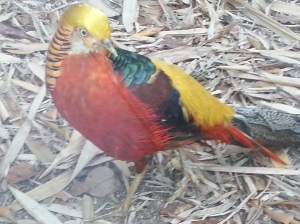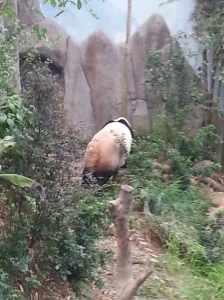Note: This was originally posted in Narrative Reflections as a blog post for an undergraduate honours module, Narrative Structures.
The “in death” series by J.D Robb is a romantic suspense series written by J.D Robb, a pseudonym of the popular romance novelist Nora Roberts. There are 45 novels and novellas in the series to date, which began in 1995 and is still ongoing. I find it rather interesting that after so many books, the series remained popular, often becoming the first in the New York Times best selling list. It is also so popular that it has its own Wikipedia page, albeit a poorly written one, and an online community where readers gather to discuss the book. Its popularity, I suspect, can be attributed to the extensive characterisation of the main characters of the series over the course of the novels and not the plot. After all, how many different plots can you find in 45 novels? It will always end with good triumphing over evil, with the main character, a cop catching the bad guy an bringing him to justice. Hence, what keeps readers going is actually the portrayal of the characters.
With this in mind, I will examine how the main character, Eve Dallas, is developed over the course of the series.
Lt. Eve Dallas, is a hardnosed cop belonging to the Homicide Division of the New York Police and Security Department in 2059. In the first book, we are given fairly detailed description of her physical appearance and this allows reader to imagine what she would look like, making her seem more real, more mimetic than an abstract character.
An intriguing backstory is also assigned to Eve Dallas, whose name was not given by her parents, but by a social worker. She was named after Eve, the first woman, and Dallas, the city in which she was found at eight years old, bloody and with no memories. She was brought up by foster system, ran away from it at 18 to join the polic academy. She has no close friends except for her mentor, Captain Ryan Feeney, who trained her when she was a rookie, and Mavis Freestone, an ex-con. However, as the series develops, more details was given about what happened to her before she was eight. Knowing that the author has yet to reveal all of the background of the main character is likely one reason why readers are encouraged to continue reading, to find out what happened to her.
The main character is also not flat, but a round character that has been fleshed out gradually in the first novel, and continues to be fleshed out in each new book.In the first book, she was described as a young brilliant up-and-coming cop in the NYPSD with few close friends, and a uptight hardnosed cop who sticks closely by the book. However, readers can see how she gradually opens up to Roarke, a self-made billionaire who was the prime suspect of the murder cases she was investigating, and falls in love with him. Ass the series progresses, she eventually married him, despite his former criminal connections, though she is still strictly by the book. However, we can see her getting increasingly more willing to use “underhand” methods to solve the case, her husband being a brilliant hacker by virtue of his past criminal activities, who can help her bypass bureaucratic red tape.In fact, She went so far to tamper with official documents to ensure that the criminal justice.Hence, we can see how the character has grown and develop from a flatter character to one who is so self-contradictory and unpredictable that she is mimetic of real people. This is especially since we can see how even as she is increasingly willing to cross lines, or recognise that lines are sometimes blurred, she still struggles with her decisions, making her a very real character.This applies not just to her working ethics, but also her relationships with other people. She starts out as a character with few close ones to one with much more friends, albeit still in a rather tight circle, from all walks of life: a bouncer, a singer, a reporter, a doctor, etc.
With every new trait that is revealed in each group, the character is further developed. It is this that made the character more mimetic, more real and possibly more lovable and this is possibly why the series is so popular.







